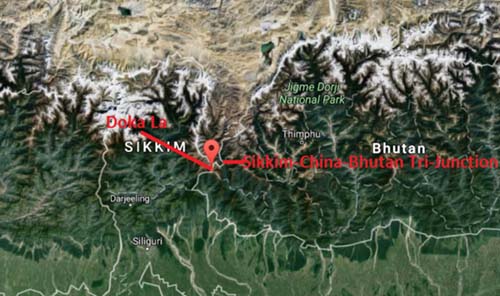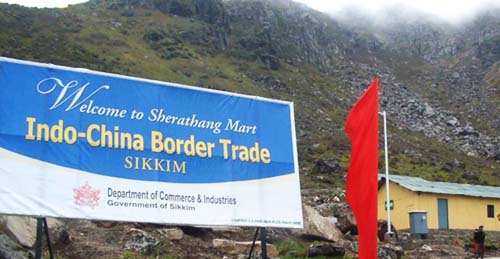U.S. strongman Donald Trump in a nepotistic fashion has granted his son-in-law Jared Kushner special diplomatic envoy portfolios to deal with the Middle East, China, Canada, and Mexico. Kushner, who is 36 and has no international experience, except for acting as a virtual embedded agent for Israel and Binyamin Netanyahu in the United States, recently warned Secretary of State Rex Tillerson to understand his place after the normally soft-spoken Tillerson blew up at a White House meeting with chief of staff Reince Priebus, Kushner, and their aides.
Tillerson complained that the White House was vetoing his selections to fill important State Department posts, including ambassadorships and secondary and tertiary positions in the department. Kushner has applied a political litmus test to State Department appointments, rejecting anyone who has ever criticized Trump or those who have contributed to Democratic candidates.
The arrogance and brashness of Kushner is about to explode in his face as the world’s most populous nation, China, and the world’s most populous democracy, India, face off in the Himalayas over a border dispute that threatens to become a wider regional conflict. If war breaks out between India and China, both nuclear powers, Kushner should be pushed aside by the adults in the Trump administration.
Borders in the Himalayan region have names like “lines of control,” “lines of actual control,” “un-demarcated boundaries,” and “historical sovereign territory.” The reason is because many of the borders have been contested since British colonial times. In the rugged and sparsely-populated mountainous range extending from Kashmir in the west to the Indian state of Arunachal Pradesh in the east, it has been nearly impossible to establish recognizable borders and the countries of the region—India, China, Pakistan, Bhutan, and Nepal—have been contesting borders since the British withdrew from the subcontinent after World War II. Mapping has been all but impossible and even Google Maps cannot pinpoint some contested areas in the Himalayas.
In 1962, a border war broke out between China and India, a conflict that threatened to blossom into a wider war pitting the United States against China and a Soviet Union that supported India. It was one of the few occasions where the United States and USSR found themselves on the same side. But that was at a time when level-headed decisions by President John F. Kennedy, Soviet leader Nikita Khrushchev, Indian Prime Minister Jawaharlal Nehru, and Chinese Foreign Minister Chou En-lai prevailed. Today, with the likes of Trump, Kushner, and Steve Bannon at the helm of the American ship of state, small border conflicts could explode into wider regional warfare.
It is not known whether Indian Prime Minister Narendra Modi brought up the border dispute with China during his recent White House visit, but the United States foreign policy apparatus is asleep at the wheel as Chinese and Indian troops face off on the border of Indian-occupied Sikkim and Chinese-controlled Tibet. Ominously, China reminded India that it had defeated the Indian army in the 1962 border war. China was also suspicious about Modi’s trip to Israel, the first by an Indian prime minister to the Jewish state. China is keenly aware of the influence Israel maintains through the Kushner cell within the White House. China suspects that India may be using Kushner and Israel to its advantage in the border confrontation.
The latest border skirmish between the two Asian powers began when Indian troops blocked the construction by Chinese workers of a road in the tri-border Doka La region of Sikkim, where the borders of India, China, and Bhutan meet. The blocking of the road by the Indian Army resulted in a statement by Beijing that the area, which is claimed by India and Bhutan, was “indisputable sovereign” Chinese territory. China demanded that India withdraw its troops from the Doka La area. Bhutan charged that Beijing violated past agreements between the two countries by building a road that headed toward the Bhutan Army camp at Zompelri.
The Royal Bhutanese Army has been involved in a project demarcating the border between Bhutan and China. It was a Bhutanese Army patrol that first discovered the Chinese construction crew, whereupon the Bhutanese told the Chinese they were violating Bhutanese territory and instructed them to withdraw. When the Chinese refused, the Bhutanese government lodged a formal diplomatic protest with the Chinese embassy in New Delhi, citing Beijing for violating the 1998 “Agreement for the Maintenance of Peace and Tranquility in the Bhutan-China Border Area” to maintain the status quo regarding their common border. Bhutan and China do not maintain diplomatic relations. China rejected Bhutan’s complaint.

Trump's foreign policy envoy to just about everywhere, the insolent and snotty Jared Kushner, is ill-prepared to deal with emerging trouble spots like Doka La. Recently, MSNBC host Chris Matthews likened Kushner to Benito Mussolini's foreign minister and son-in-law Count Galeazzo Ciano. Mussolini later had Ciano executed for treason. Matthews said he was not suggesting the same fate for Kushner.
China is believed to be illegally occupying 154 square miles of Bhutanese territory in west Bhutan. In return for ceding its claim to western Bhutan, China has offered to exchange with the tiny kingdom, where the economy is based on “gross national happiness,” 347 square miles of territory in northern Bhutan. However, the northern Bhutan territory is already Bhutanese, so the Chinese are trying to exchange illegally occupied territory for illegally claimed territory.

Military skirmishes along the Sikkim-Tibet border threaten cross-border commerce, as well as a wider war.
Indian military personnel later joined Bhutanese army units at the Chinese highway construction site and reiterated Bhutan’s request to withdraw from the region. After the border incidents, Indian Army chief General Bipin Rawat visited Indian garrisons along the Sikkim-Tibet border and warned that India could fight a two-front war against China and Pakistan, while ensuring the stability of restive Indian states in the region. India created the 17 Mountain Strike Corps composed of two mountain divisions in Sikkim to specifically strike at Chinese military units in Tibet in the event of an all-out war. Aiding the Mountain Corps are two battalions of Sikkim Scouts, comprised of native Sikkimese troops, who would launch sabotage missions against Chinese targets in Sikkim and Tibet. Similar units, the Ladakh Scouts and Arunachal Scouts, also made up of local troops, would conduct similar missions against Chinese forces in Tibet.
China, in retaliation for the Indian Army’s moves against its road construction crew, blocked access for pilgrims seeking to cross the strategic and heavily-militarized Nathu La pass between Sikkim into Tibet and visit Mount Kailash and Lake Mansarovar, which are sacred to Hindus and Buddhists, and even a few Christians who believe a young Jesus once walked in the shadow of Mount Kailash. The blocking of the religious pilgrims on the annual “yatra” excursion sent a message not only to New Delhi, but also to the exiled Tibetan Dalai Lama’s government in Dharamsala, India, and the governments of Sikkim and Bhutan that China would exercise its power in the region. India responded to China’s road project by stating it represents a “significant change of status quo with security implications for India.” In 2006, Nathu La pass has gained even more importance. That year saw the pass being opened to not only commercial traffic but also tourists.
It is believed that the military standoff in Doka La resulted from the Dalai Lama’s recent visit to Arunchal Pradesh, which China claims as South Tibet. The Chinese were also unhappy with the Dalai Lama’s planned visit to Leh, the capital of Ladakh in Kashmir, where sovereignty over some of the territory is disputed by India, Pakistan, and China. Ladakh has also been the scene of military border incidents between Chinese and Indian troops.
China has indicated that the road construction in Doka La has nothing to do with the Dalai Lama and that it is part of China’s “One Belt, One Road” infrastructure project of establishing modern highway and rail links throughout Asia and beyond.
There were special interests in both Tibet and India that never approved of the 2003 Sino-Indian agreement that saw India recognize Tibet as the “Tibet Autonomous Region” of China in return for Beijing recognizing Sikkim as a state of India. Before the 2003 agreement, Chinese maps showed Sikkim as an independent state. The state had been an independent kingdom until 1975, when Indian troops invaded the country and deposed its monarch and his government. In November 2008, Chinese troops demolished Indian bunkers built in the disputed Doka La region. Preceding the standoff over the Chinese road crew incident this month was the bulldozing of at least one fortified Indian bunker in the Doka La region by Chinese forces in early June.
Note: This editor was one of the few Western journalists who managed to gain entry to Sikkim in 2008. Posing as a “cook book” author, I was able to see the massive Indian military presence in the country and also establish personal contact with members of the deposed Sikkimese royal family.
Previously published in the Wayne Madsen Report.
Copyright © 2017 WayneMadenReport.com
Wayne Madsen is a Washington, DC-based investigative journalist and nationally-distributed columnist. He is the editor and publisher of the Wayne Madsen Report (subscription required).


